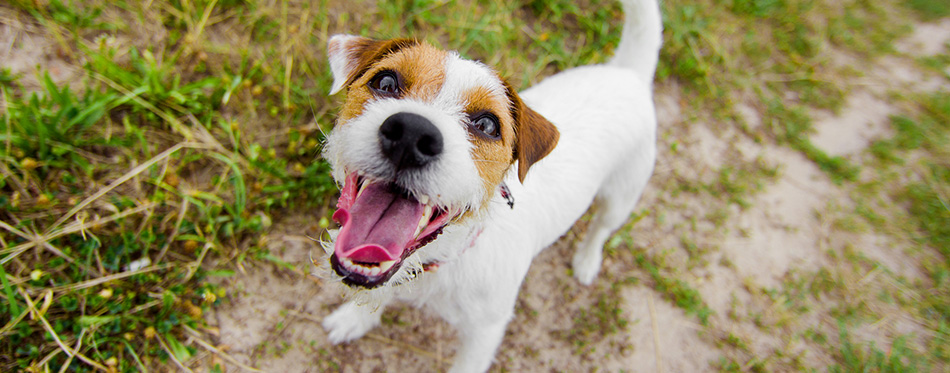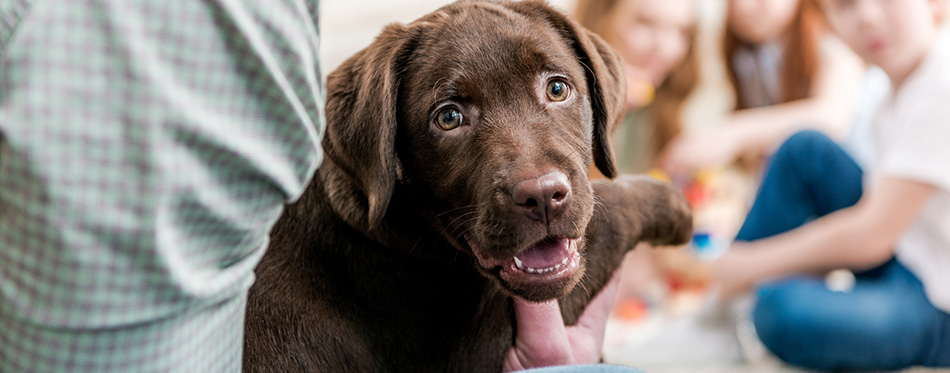Dog’s teeth are as important as those of humans. They play a crucial role in transforming food into smaller particles thru the process of chewing. Chewn food can be swallowed easily, traversing the digestive tract starting from the esophagus all the way down. Without the teeth, your dog will have to subsist on slurries and a more liquid diet since it no longer has the capacity to break down large chunks of food. So, how many pearly whites does man’s best friend have?

How Many Teeth Does a Dog Have?
Forty-two. This is the number of teeth that adult dogs have. As puppies, however, their baby teeth or deciduous teeth number only 28. This is still a third more than what we humans have in our mouths. As babies, we have 20 deciduous or milk teeth. When we grow up, the number of our dentition also increases to 32.
Adult dogs have 12 front teeth or incisors. Each jaw – upper and lower – has 6 incisors that include 2 central, 2 middle, and 2 lateral incisors. This type of teeth is perfect for nibbling. It also allows the dog to carry objects.
Adjacent to the lateral incisor is the canine tooth. We also know this as the “fang”. There are four of these. These teeth are not Dracula’s fangs, mind you. They are handy when it comes to holding an object in the dog’s mouth. Because the canines are longer than the rest of the teeth, these can puncture objects. Since canine teeth “sinks” into an object, there is no removing the object from the dog’s mouth unless you pry its mouth.
Next to the canines are 4 pre-molars, totaling 16. These have a flat yet narrow top or head. Its main function is for chewing.
The last set of teeth is the molars. They number 10 in total. These also have flat heads like premolars. They have a larger surface area, though. Molars are perfect for breaking down large chunks of food like kibbles and bones. These are also useful for grinding tough food. An adult dog will have 6 molars on the lower jaw and only 4 on the upper jaw.
The Puppy Teeth
Like human babies, puppies don’t have teeth at birth. There is reason to believe, however, that tooth buds are already present underneath their gums. The only thing is that we don’t see these tooth buds developing.
As puppies suckle from their mommy’s breasts for milk, the pressure stimulates the tooth buds to push towards the surface of the gums. These are the very first puppy or deciduous teeth. By the age of 3 to 6 weeks, the puppy will already have its front teeth or incisors. By the 5th week of life, their canine teeth or fangs will already show. Their premolars will start erupting or showing by age 6 weeks. Puppies do not have molars. As such, the total number of deciduous teeth is only 28.
Transitioning from Puppy Teeth to Adult Dog Teeth
Underneath the deciduous teeth, the adult permanent teeth are already starting to grow. As they grow, they press on the roots of the deciduous teeth. This stimulates the puppy’s body to resorb or to absorb the roots of the baby teeth. Over time, these roots weaken and disappear. They leave only the tooth crown behind. As permanent teeth erupt through the gums, the crown of the deciduous teeth falls off. It is also possible for the primary tooth crown to fall off while your puppy is eating.
The eruption of adult dog permanent teeth starts by the time your puppy reaches the age of 3 months. Following the first-in-first-out philosophy, the incisors are the first to go. Permanent incisors replace the baby teeth starting 3 to 5 months of age. The canines and premolars follow by the age of 4 to 6 months. By age 5 months, the older puppy will already show its molars. As the puppy reaches its 7th month of life, it will already have the complete set of adult dog teeth numbering 42.
Is it Possible for Dogs to Regrow Their Permanent Teeth?
Like us humans, once a dog loses one of its permanent teeth, it loses it forever. Dogs are not like sharks that can regrow their teeth when these fall off. It is for this reason that proper care of your dog’s teeth is important. Since the teeth are one of the most crucial organs for initial digestion, losing the teeth can have a negative impact on your dog’s nutrition.
You may also like our articles on Dog Toothbrushes and Dog Toothpaste.

Caring for Your Dog’s Teeth
Dental care in dogs starts from puppyhood. Some of us think that we don’t need to brush our puppy’s teeth. These will fall off, after all. We are missing the point. As puppies feed, some of their food can stick onto their temporary teeth. This can invite microorganisms to colonize. This can lead to the formation of dental plaques which can facilitate the further growth of microorganisms. This can lead to gum diseases in the future. Find out more about dog dental spray here.
Brushing your puppy’s teeth doesn’t only keep their dentition healthy. It also acclimatizes them to the sensation of brushing. When they grow older, they will never grow anxious anymore every time you brush their teeth.
Chew toys can also help in the removal of food particles from your puppy’s teeth. These can also minimize the discomforts that are present during teething or the transition from baby teeth to adult permanent teeth. Be careful about the chew toys you choose for your puppy, though. It should not be very hard that they can fracture its young teeth.
Getting your dog to the vet for a dental checkup also helps. This can help remove plaque and tartar that are difficult to remove with ordinary brushing alone. This lays the foundation for a healthier set of teeth for your dog.
With proper care, you can ensure your dog retains its 42 permanent teeth as it grows old. You can guarantee its proper nutrition while also preventing gum diseases.
Sources:
- Puppy Teeth: Everything You Need to Know – PetMD
- Preventing Dental Disease in Pets – HuffPost Life

